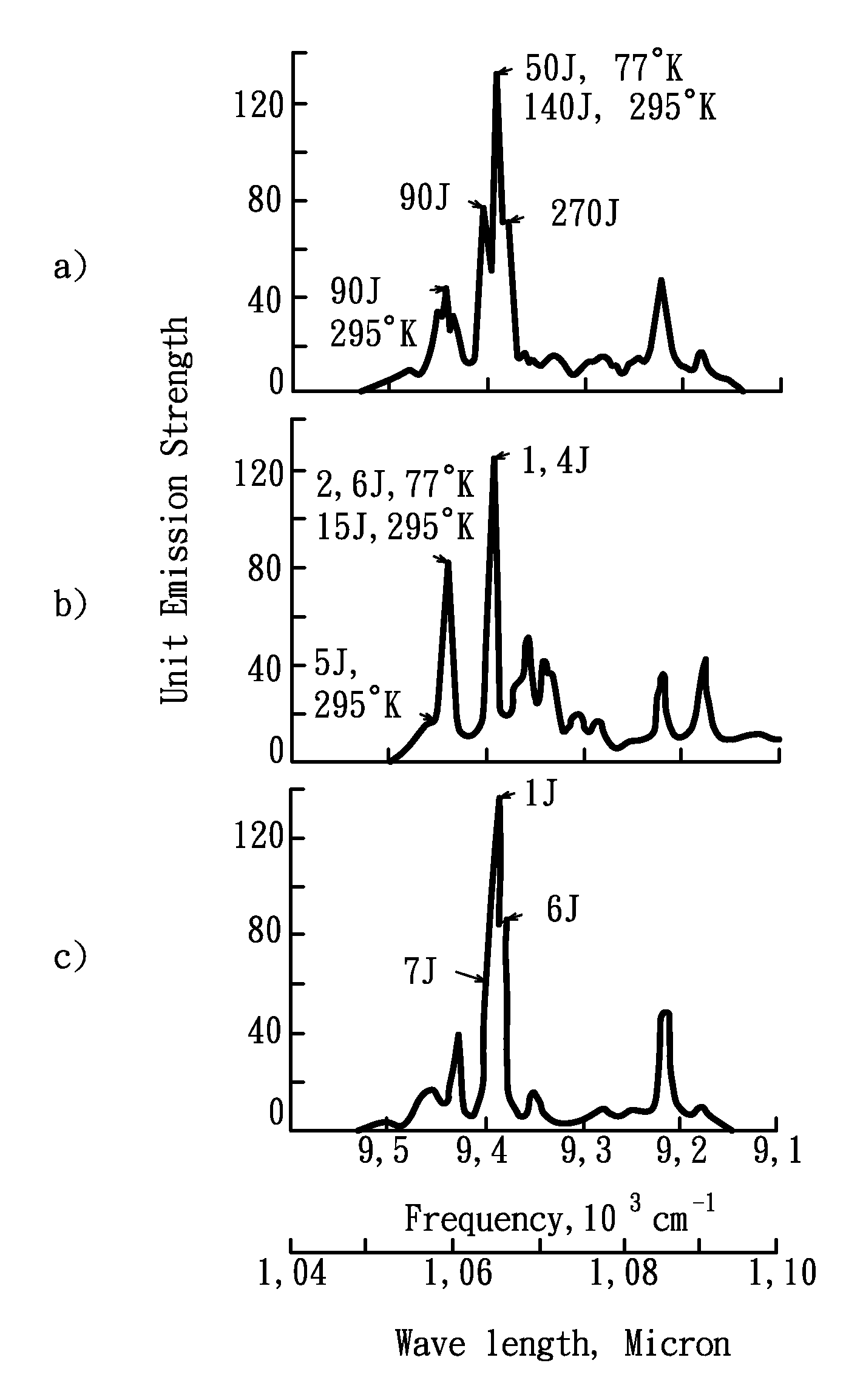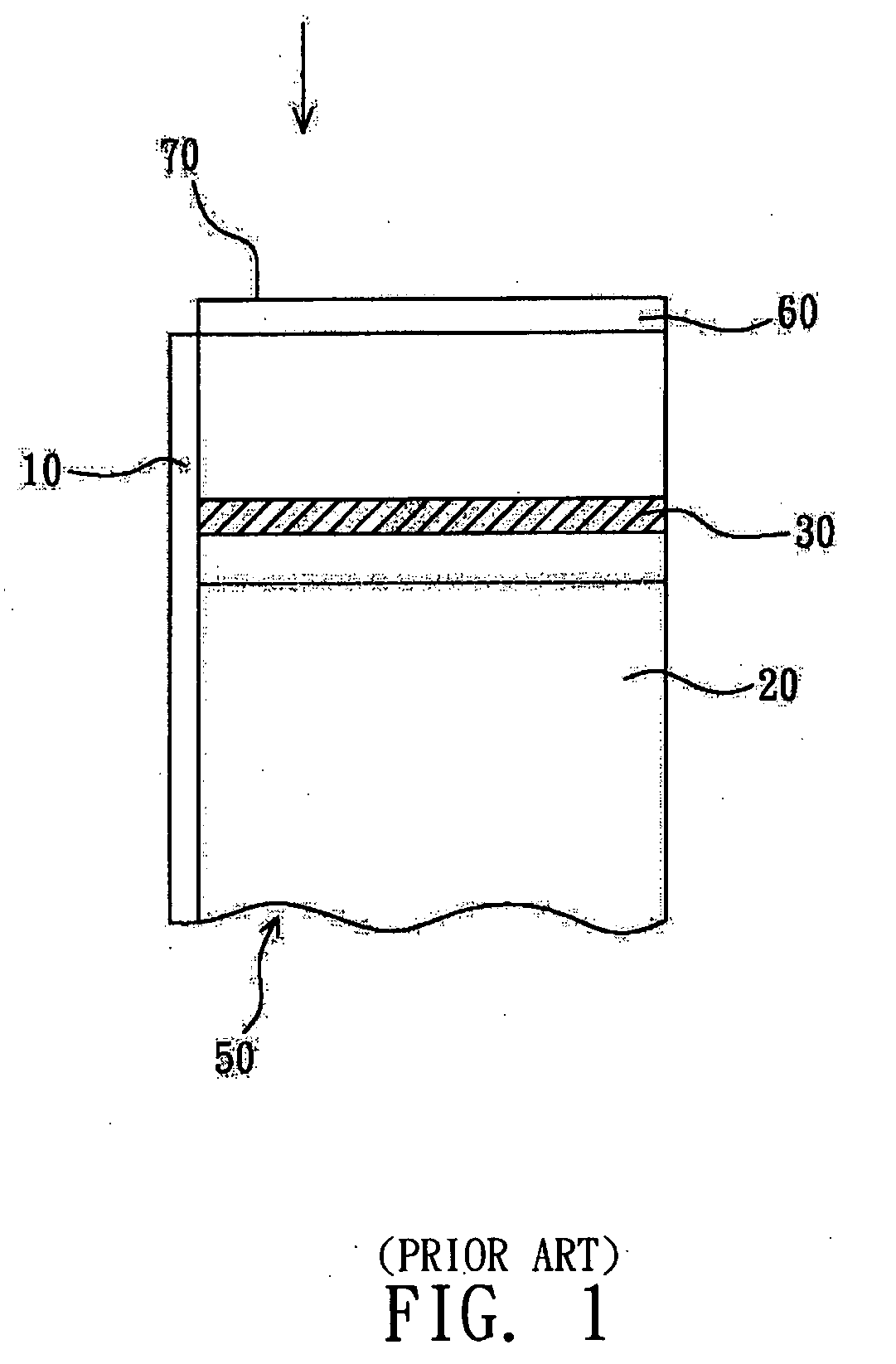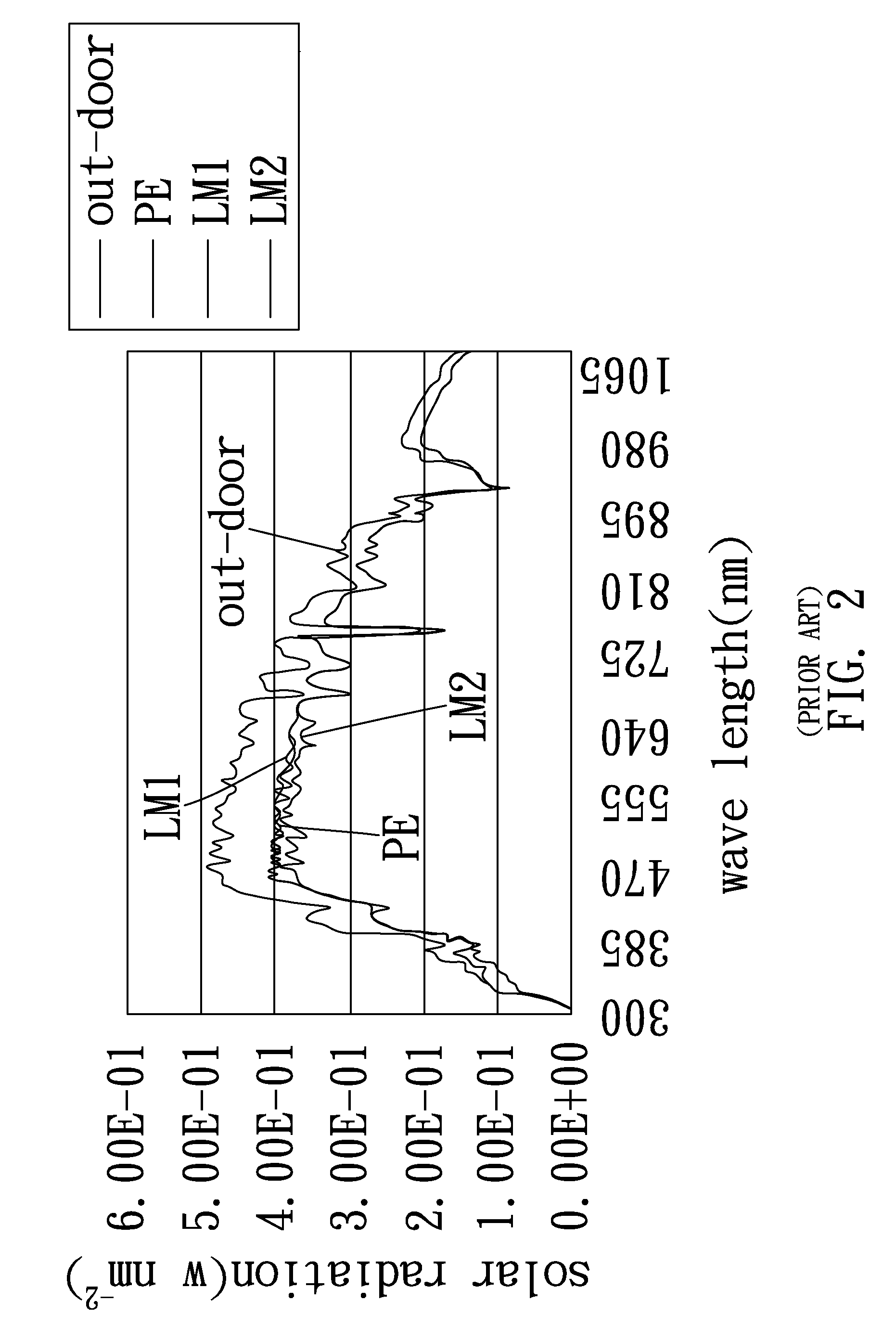Solar cell and its spectrum converter
a solar cell and spectrum converter technology, applied in the field of energy technology, can solve the problems of high cost of conventional solar cells and solar cell sets, inconformity of maximum value, and inability of physical single crystal silicon-based solar cells to achieve this extreme value, etc., to achieve low manufacturing cost, increase the electric parameters of single crystal silicon-based, and increase the total efficiency of solar cells
- Summary
- Abstract
- Description
- Claims
- Application Information
AI Technical Summary
Benefits of technology
Problems solved by technology
Method used
Image
Examples
Embodiment Construction
[0029]At first, the object of the present invention is to eliminate the drawbacks of the aforesaid prior art solar cell. To achieve this object, a solar cell 1 in accordance with the present invention is shown in FIG. 5, comprising a single crystal silicon chip 2, an electrode system 3, and a glass plate 5 covered on the single crystal silicon chip 2, characterized in that the solar cell 1 further comprises a spectrum converter 6 sandwiched between the single crystal silicon chip 2 and the glass plate 5. The spectrum converter 6 has filled therein an inorganic phosphor 61. The inorganic phosphor 61 absorbs purple, blue and green light of the Sun's solar radiation and converts the absorption into a photoluminescent light in yellow, orange-yellow and infrared area in the electromagnetic spectrum enhancing the efficiency of the solar cell;
[0030]Wherein, the glass plate 5 can be a silicate glass plate;
[0031]Wherein, the spectrum converter 6 is composed of an ethyl acetoacetate polymer f...
PUM
 Login to View More
Login to View More Abstract
Description
Claims
Application Information
 Login to View More
Login to View More - R&D
- Intellectual Property
- Life Sciences
- Materials
- Tech Scout
- Unparalleled Data Quality
- Higher Quality Content
- 60% Fewer Hallucinations
Browse by: Latest US Patents, China's latest patents, Technical Efficacy Thesaurus, Application Domain, Technology Topic, Popular Technical Reports.
© 2025 PatSnap. All rights reserved.Legal|Privacy policy|Modern Slavery Act Transparency Statement|Sitemap|About US| Contact US: help@patsnap.com



